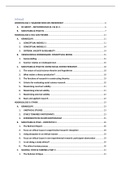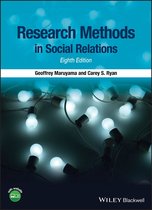Samenvatting
Summary Onderzoeksmethodologie - Alle stof
- Instelling
- Universiteit Van Amsterdam (UvA)
Dit is een samenvatting van alle lesstof voor het vak Onderzoeksmethodoloie van de pre-master Orthopedagogiek aan de Universiteit van Amsterdam. De samenvatting is voornamelijk in het Engels geschreven, maar bepaalde onderdelen zijn in het Nederlands. De samenvatting bevat het boek van Maruyama & R...
[Meer zien]





